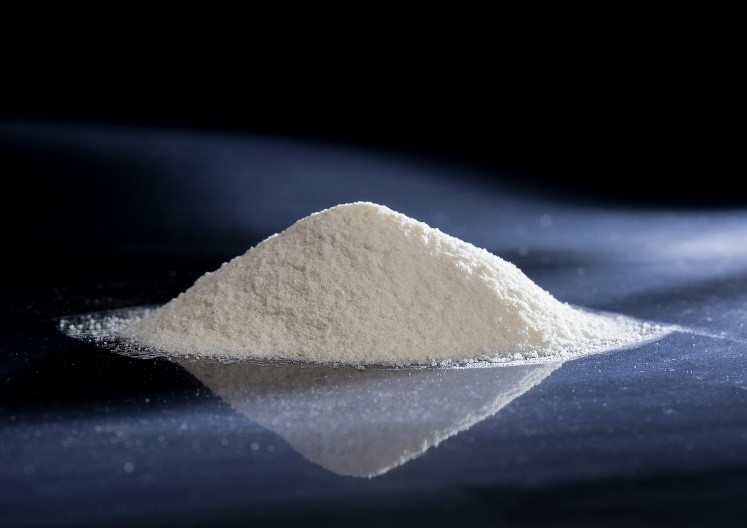Sodium hydroxide is most commonly known as lye or caustic soda.
Sodium hydroxide formula
This inorganic compound, with the formula NaOH, has a melting point of 323 °C (613 °F; 596 K). NaOH is a white, odourless solid at room temperature. The liquid form of sodium hydroxide on the other hand is colourless. It also has no odour and can react violently with strong acids and with water.
Sodium hydroxide uses
Sodium hydroxide is the most widely used industrial alkali, as it is extremely corrosive and readily absorbs moisture until it dissolves.
From soap to paper, textiles, explosives and more, NaOH is used as the base for essential reactions to occur. Here are a few examples:
- Water treatment – One of the most common used of sodium hydroxide is by water treatment plants to control water acidity and to remove heavy metals from drinking water.
- Alkali refining or fat and oil processing – NaOH is used to remove undesired flavours from crude fats and oils for human consumption. In this process, the fats are heated between 40o and 85oC and treated with an aqueous solution of sodium hydroxide.
- Mercerisation – a textile finishing treatment for cellulose fabric and yarn, mainly cotton and flax, which improves dye uptake and tear strength and reduces fabric shrinkage. It is also used in the textile industry to make dyes, process cotton fabric and in laundering and bleaching, as well as in metal cleaning and processing, oxide coating, electroplating and electrolytic extracting.
- Cleaning agents – Since sodium hydroxide interacts with fats and transforms them into soluble material, it’s no surprise that is also widely used as a major ingredient in drain and oven cleaners.
- Soap – Lye (NaOH), is the most important ingredient in the soap making process. When sodium hydroxide beads or flakes are mixed with a liquid, a lye solution is created. This solution, when mixed with natural fats and oils, such as tallow or vegetable oil, will cause a chemical reaction, called saponification. The product of this reaction is sodium fatty acid salt and glycerine (or glycerol) – beautiful soap as we know it.
The list goes on and includes the manufacturing of fabric, plastic wrap, paper and soap, and even explosives, rayon, spandex, epoxy resins, paints, glass and ceramics.
Handle sodium hydroxide with care
Sodium hydroxide is an alkaline acid, which needs to be handled with care. It reacts with moisture from the air and may generate heat as it dissolves. This heat can cause a fire if it is near flammable materials.
Sodium hydroxide is harmful, but the seriousness of the situation depends on several factors including the concentration of sodium hydroxide, length of time exposed, and whether you touched it, drank it or inhaled it.
Contact with very high concentrations of sodium hydroxide can cause severe burns to the eyes, skin, digestive system or lungs, resulting in permanent damage or death. Prolonged or repeated skin contact may cause dermatitis. Repeated inhalation of sodium hydroxide vapour can lead to permanent lung damage, immediate vomiting, nausea, diarrhoea or chest and stomach pain, as well as swallowing difficulties.
Despite all the health and safety cautions associated with the use of NaOH, it is relatively safe to use, if the necessary safety measures for the transport, packaging, storage, spillage, disposal and labelling for workers, are followed. It is also advised to keep cleaning products out of the reach of children and to keep cleaning products in their original packaging.
If, however you are accidentally exposed to NaOH, here’s what to do:
- Eye contact – Flush the eyes with water for 30 minutes, lift upper and lower lids and remove contact lenses.
- Skin Contact – Remove contaminated clothing and flush the area with water for 15 minutes.
- Inhalation – Remove the person from exposure, if it is safe for you to do so. If the person is unresponsive and not breathing normally, then begin CPR.
- Ingestion – DO NOT MAKE THE PERSON VOMIT. If the person is fully conscious and is not in respiratory distress, give them a cup of water to drink to dilute the sodium hydroxide. Never attempt CPR on a conscious person.
Chemtoll Chemical Toll Manufacturers is a Cape Town based Level 1 BBBE and ISO 9001 accredited expert in the supply and manufacturing of bulk chemicals including sodium hydroxide. As your trusted partner in bulk chemical manufacturing, Chemtoll is the perfect toll manufacturer for your needs. We will help you to not only produce a quality product, but also to perfect your recipes and formulas. Contact us on +27 21 842 2963 for a need’s analysis, a comprehensive quote, or for more information on NaOH or the other products we offer.


